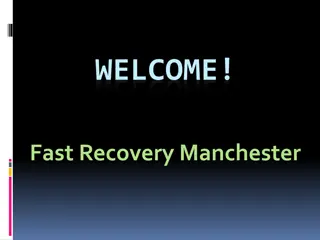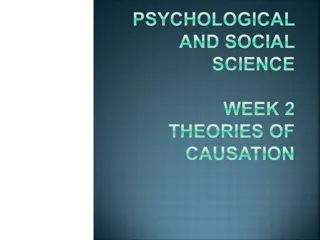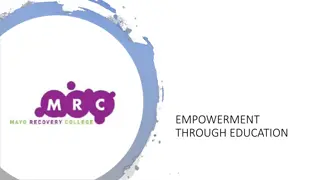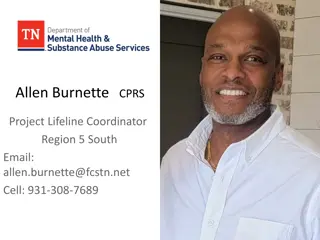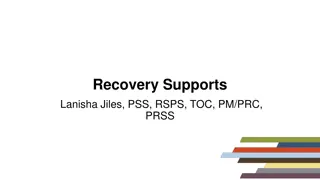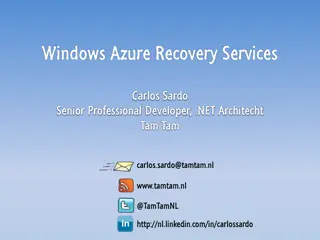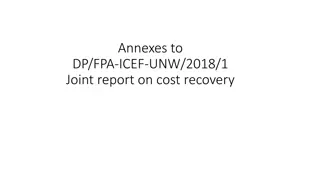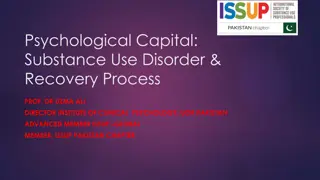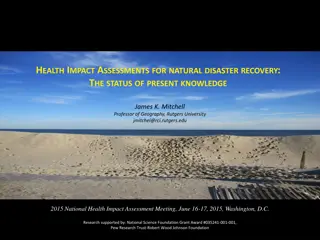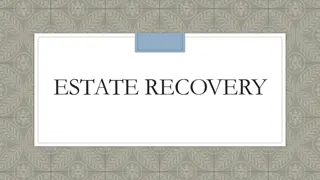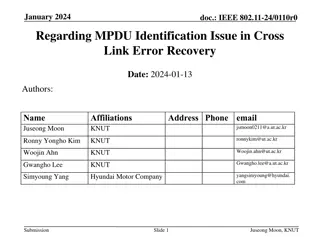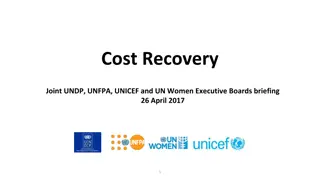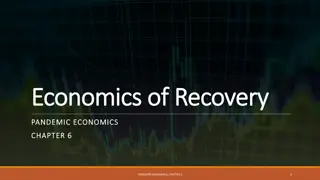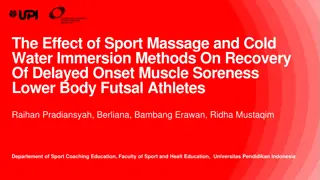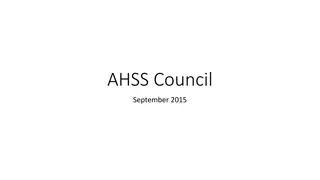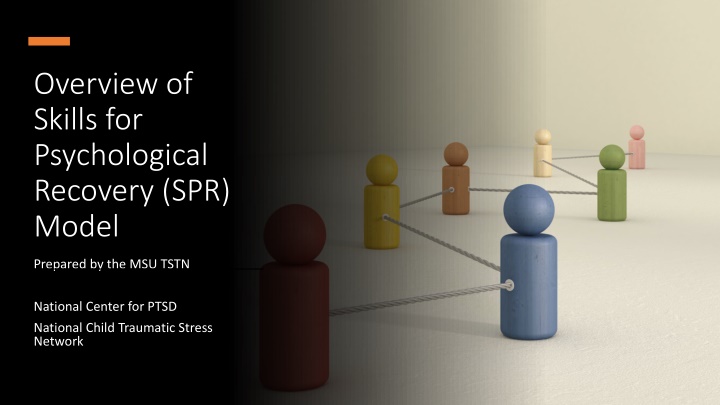
Skills for Psychological Recovery Model Overview
Explore the Skills for Psychological Recovery (SPR) model, an evidence-informed approach designed to help individuals cope with disaster and trauma aftermath. Learn about the core skills, standards, and providers of SPR and how it differs from Psychological First Aid.
Download Presentation

Please find below an Image/Link to download the presentation.
The content on the website is provided AS IS for your information and personal use only. It may not be sold, licensed, or shared on other websites without obtaining consent from the author. If you encounter any issues during the download, it is possible that the publisher has removed the file from their server.
You are allowed to download the files provided on this website for personal or commercial use, subject to the condition that they are used lawfully. All files are the property of their respective owners.
The content on the website is provided AS IS for your information and personal use only. It may not be sold, licensed, or shared on other websites without obtaining consent from the author.
E N D
Presentation Transcript
Overview of Skills for Psychological Recovery (SPR) Model Prepared by the MSU TSTN National Center for PTSD National Child Traumatic Stress Network
What is SPR? Evidence-informed modular approach Designed for children, adolescents, adults, and families To be used in the weeks and months following disaster and trauma after Psychological First Aid (PFA) has been utilized or when more intensive intervention than PFA is needed Goal: Reduce ongoing distress and effectively cope with post- disaster stresses and adversities Assumptions: Broad range of reactions (physical, psychological, behavioral, spiritual) over differing periods of time. Some will recover on their own, others will experience reactions that interfere with adaptive coping Approach: Compassionate, caring, and informed providers may help these survivors recover by introducing them to the applicable SPR skills.
Standards of SPR The principles and techniques of SPR meet four basic standards: 1. Consistent with research evidence on risk and resilience following trauma 2. Applicable and practical in field settings 3. Appropriate for developmental levels across the lifespan 4. Culturally informed
SPR Core Skills First, identify and prioritize a survivor s needs, and then helping a survivor to learn SPR s core skills: Building Problem-Solving Skills Promoting Positive Activities Managing Reactions Promoting Helpful Thinking Rebuilding Healthy Social Connections
What SPR is and is not It is not Psychological First Aid which is designed to meet immediate needs and recovery phase in days/weeks after trauma. It is not formal mental health treatment it is secondary prevention, for those who need more help in recovery referral for mental health treatment is appropriate. It is secondary prevention designed to help after the safety, security, and other vital and immediate needs have been met and when the community is rebuilding. It is a focus on skill building and teaching of these skills.
SPR is designed for delivery by mental health and other health workers who provide ongoing support and assistance to affected children, families, and adults as part of an organized disaster response effort. Who delivers SPR? Providers must have completed a basic credentialing course, and ideally should have had some prior experience in addressing traumatic stress or in disaster response. Should be delivered in a quiet space for confidentiality about 45 minutes
Gathering Information and Prioritizing Assistance Goal: To gather information to determine if there is a need for immediate referral within your agency or to other services, to understand the survivor s most pressing needs and concerns, and to prioritize and plan SPR intervention strategies Rationale: In the post-disaster period, survivors often deal with ongoing distress due to their disaster experiences and losses. They may need assistance with immediate or long- term medical or mental health conditions, be faced with a range of hardships and adversities, have concerns about safety, and experience difficulties in interpersonal and role functioning. Gathering information is the first step in assisting survivors to identify and prioritize their current needs and concerns in order to address them. Use for: All survivors who are making initial contact or returning after a break in services Time: 10-15 Minutes
Gathering Information and Prioritizing Assistance Skill Steps: After Explaining the Rationale for Information Gathering: 1. Identify Current Needs and Concerns 2. Prioritize Areas to Address 3. Make an Action Plan Choose what SPR skill to work on based on appropriateness for the area prioritized Discuss how many sessions will be needed/are possible
Building Problem-Solving Skills Goal: Help survivors to prioritize and solve difficulties or problems Rationale: Disasters often create many difficulties that can make survivors feel helpless or even immobilized in the face of numerous problems. Ongoing stress and pressures to do something can make it hard to step back and think effectively about the best way to handle a situation. Having a systematic way to solve problems can help survivors address problems more effectively, regain a sense of control, and increase their self-efficacy. Use for Survivors who identify concerns about: Feeling overwhelmed or immobilized by multiple problems Feeling helpless to come up with solutions that can solve their problems Feeling demoralized or lacking control over their situation Family members who are having difficulty solving problems Time 30-45 Minutes
Skill Steps After Explaining the Rationale for Problem-Solving: 1. Define the Problem/Decide Ownership 2. Set the Goal 3. Brainstorm 4. Evaluate and Choose the Best Solutions Building Problem- Solving Skills
Thoughts and Feedback?
Promoting Positive Activity Goal: Help survivors plan and engage in positive, pleasurable, or meaningful activities to improve their mood and help them regain a sense of control Rationale: Disasters often disrupt normal routines and activities that provide a sense of purpose, control, and pleasure. Helping survivors identify, schedule, and engage in positive, pleasurable, or meaningful activities can help them reestablish routines and engage in hobbies and other satisfying activities that can improve their mood and restore a sense of control. Use for Survivors who identify concerns about: Feeling down or apathetic Ongoing disruption of normal life routines and activities Low involvement in pleasurable or positive activities Children who have stopped playing or who are engaged in high-risk, dangerous play Time 20 - 30 Minutes
Skill Steps After Explaining the Rationale for Engaging in Positive Activities: 1. Identify and Plan One or More Activities 2. Schedule Activities in a Calendar Promoting Positive Activity
Visualization for Children
Managing Reactions Goal: To enhance skills to calm upsetting physical and emotional reactions; learn new strategies to deal with reactions to stressful situations, including reminders, and put words to difficult experiences to better understand and manage distress Rationale: Disaster survivors may experience upsetting physical and emotional reactions that arise when confronting disaster-related experiences and reminders of the disaster, as well as ongoing stress or life changes. These reactions can adversely affect mood, decision-making, interpersonal life, daily functioning, and physical health. Learning skills to address and manage these reactions can help protect physical and mental health, improve self-confidence, enhance interpersonal and role functioning, and reduce maladaptive efforts at coping. Use for Survivors who identify distressing physical and/or emotional reactions in response to disaster- related experiences, disaster reminders, or current stressful situations Time 45 Minutes **a lot of handouts related to this section
Skill Steps After Explaining the Rationale for Learning How to Manage Distressing Reactions: Managing Reactions 1. Identify Distressing Reactions and Their Triggers 2. Teach Skills to Address Distressing Reactions 3. Create a Plan to Manage a Reaction
Thoughts and Feedback?

